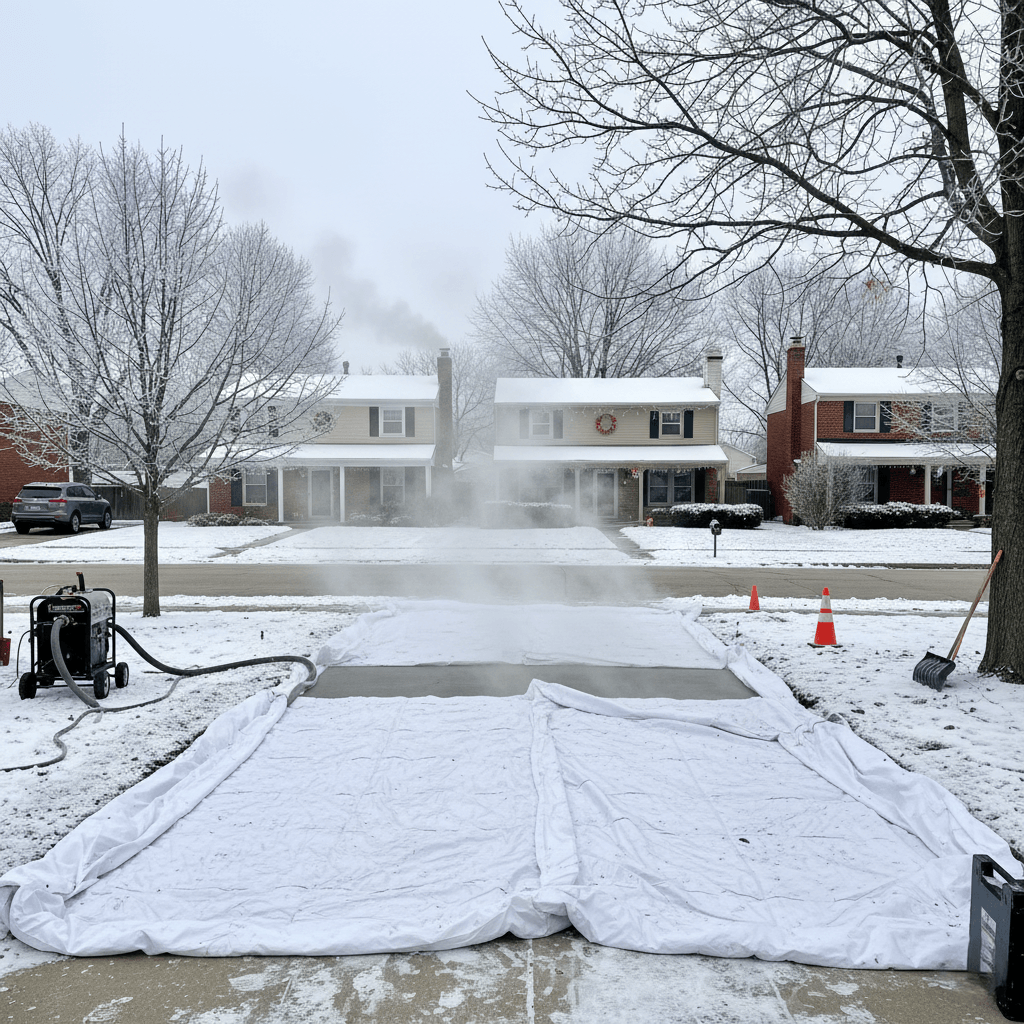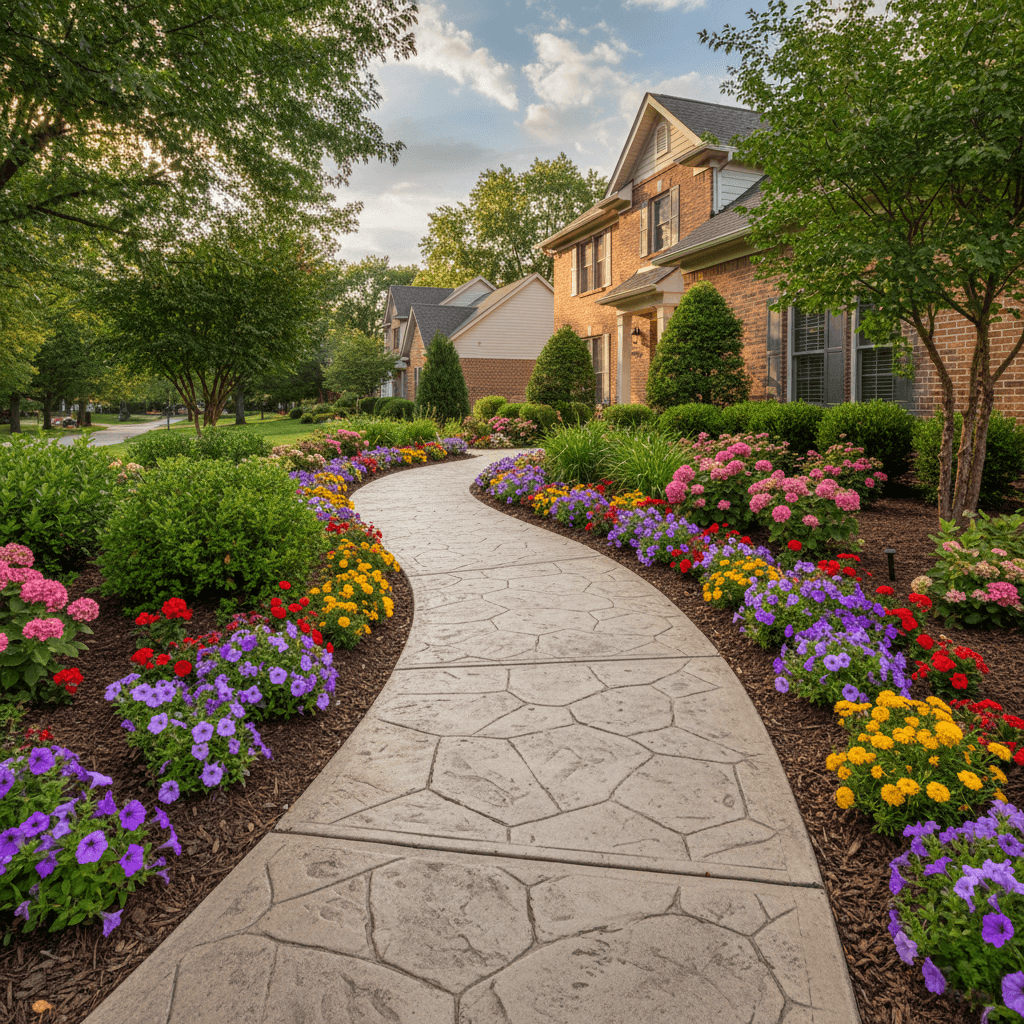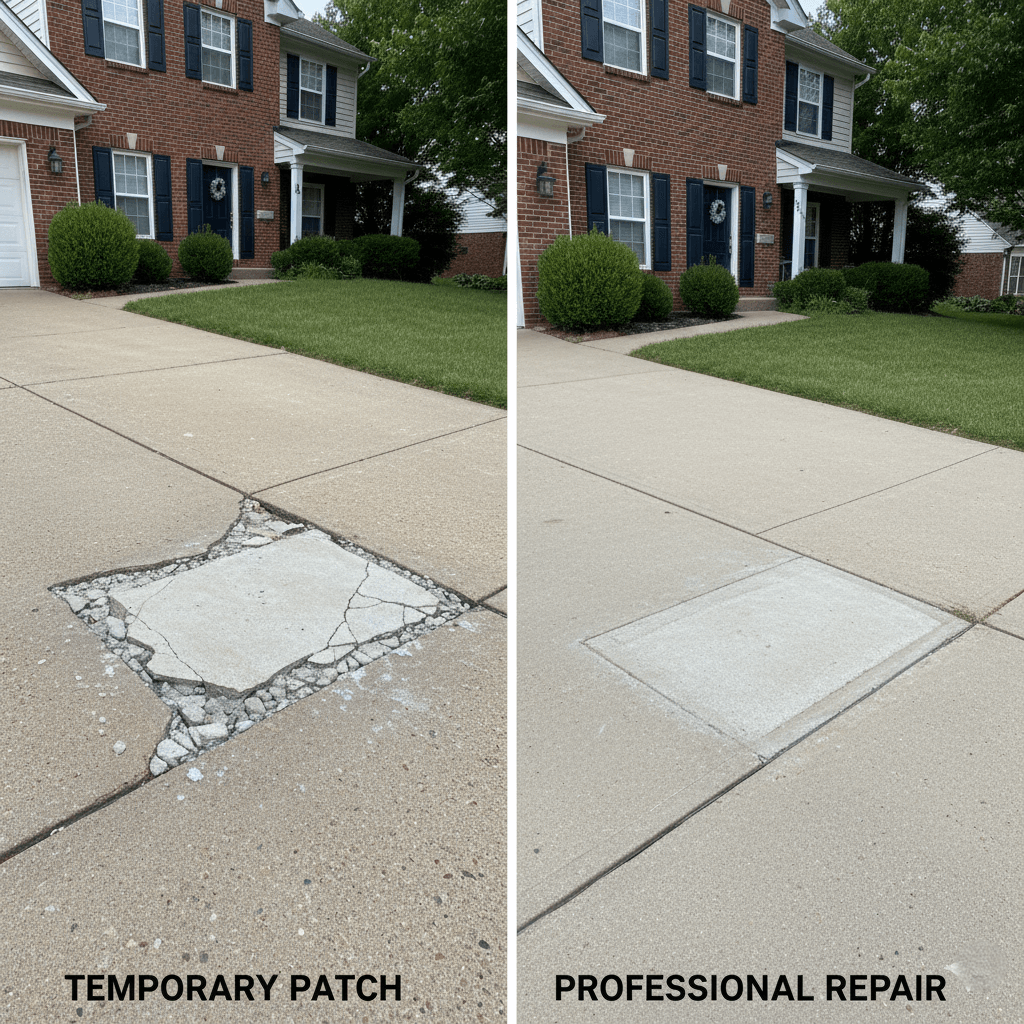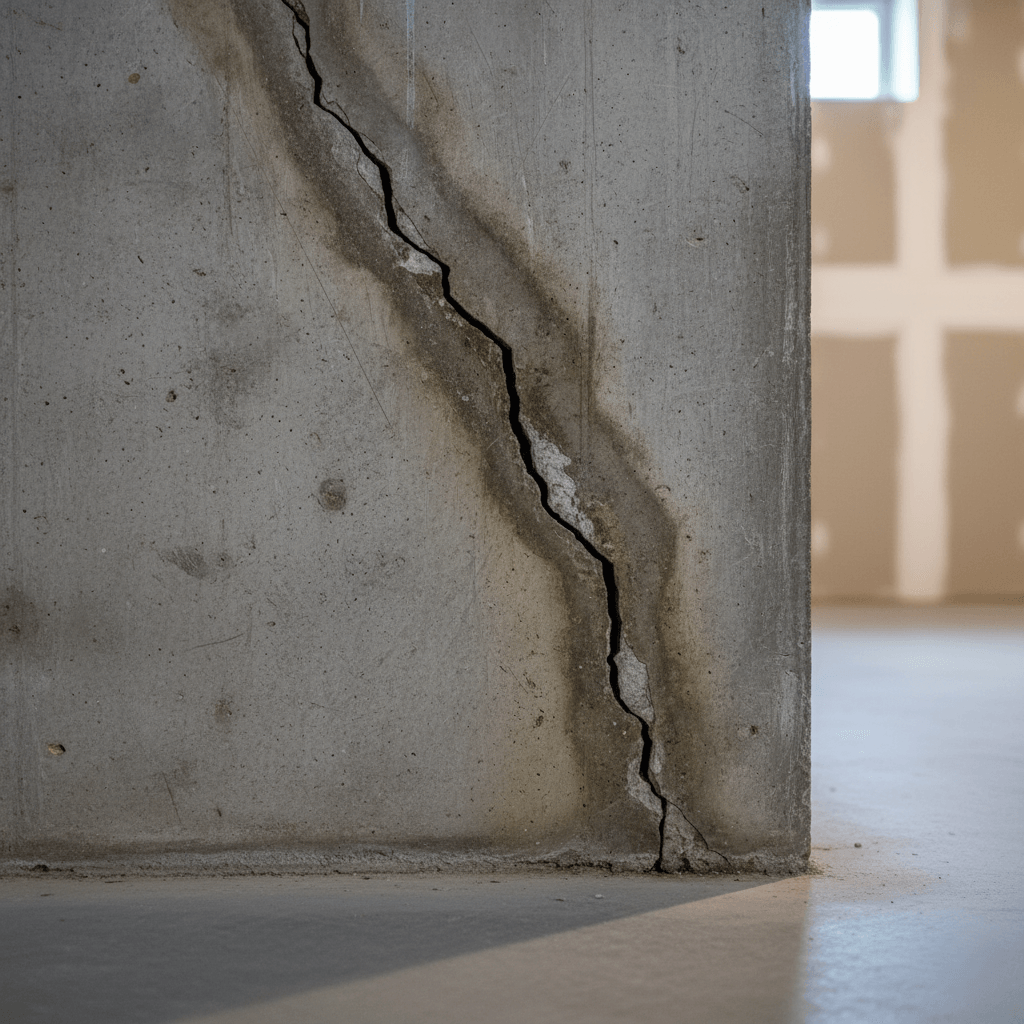
Pouring Concrete in St. Louis Winter: Precautions
Pouring Concrete St. Louis
Winter temperatures in St. Louis can drop well below freezing, creating significant challenges for concrete installations. Successfully pouring concrete during colder months requires careful planning, specialized techniques, and strict adherence to temperature guidelines. Understanding these precautions protects your investment and ensures the structural integrity of your project. Whether you’re installing a new driveway near Tower Grove or replacing a patio in the Central West End, proper cold-weather procedures make all the difference.

Understanding St. Louis Winter Conditions
St. Louis experiences harsh winter weather with temperatures typically ranging from 25°F to 40°F between December and February. These conditions fall well within the American Concrete Institute’s definition of cold weather, which includes any period when temperatures remain below 40°F for three consecutive days. Additionally, when temperatures stay below 50°F for more than half of any 24 hours, special precautions become mandatory. The city’s location along the Mississippi River brings additional moisture and wind chill factors that can accelerate heat loss from freshly poured concrete.
Critical Temperature Requirements
Optimal Temperature Range
Experts agree that the ideal range for pouring concrete falls between 50°F and 60°F. However, winter construction often demands working in less favorable conditions. When temperatures dip below 40°F, the chemical reactions that strengthen concrete slow dramatically, potentially compromising the final strength. Freezing temperatures pose an even greater threat, as water within the mixture can freeze and expand, creating internal cracks and surface damage.
Maintaining Proper Curing Temperatures
The curing process requires sustained warmth for at least 48 hours after placement. Concrete must remain above 50°F during this initial period to achieve proper strength development. Throughout the full curing cycle, which typically extends seven days, temperatures should ideally stay between 50°F and 70°F. Monitoring concrete temperature becomes crucial during winter installations, as ambient air temperature alone doesn’t reflect the actual temperature within the concrete mass.
Essential Pre-Pour Preparations
Ground Thawing Procedures
Frozen ground can draw heat away from fresh concrete, causing premature cooling and curing problems. Before any winter installation near neighborhoods like Lafayette Square, the subgrade must be completely thawed. Professional contractors use portable ground thawing equipment to prepare the surface, ensuring it reaches a temperature above 32°F. This step prevents the concrete from cooling below the critical 40°F threshold during placement.
Material Storage and Heating
All concrete ingredients should be stored in heated enclosures before mixing. Aggregate stockpiles need protection from snow and ice accumulation, as frozen materials can significantly lower the temperature of the finished mix. Using hot water during the mixing process helps elevate the concrete temperature, providing a buffer against rapid cooling. Water temperatures between 140°F and 180°F are commonly used, though excessive heat can cause flash setting issues.
Specialized Mix Designs for Winter
Cold-weather concrete installations often benefit from modified mix designs that accelerate the curing process. Type III Portland cement, known as high-early-strength cement, generates more heat during hydration and achieves strength gains faster than standard formulations. Chemical accelerators, such as calcium chloride up to 2% by cement weight, can reduce setting time and improve early strength development. However, these additives require precise measurement and should only be used by experienced professionals.
Protection Methods During Curing
Insulated Blanket Systems
Insulated concrete blankets provide essential protection during the critical curing period. These specialized covers trap the heat generated by the concrete’s hydration reaction, maintaining adequate temperatures even when ambient conditions are unfavorable. Multiple layers may be necessary when temperatures drop significantly below freezing. The blankets should extend beyond the concrete edges to prevent cold air infiltration along the perimeter.
Heated Enclosures and Windbreaks
For large projects or extremely cold conditions, temporary heated enclosures create a controlled environment around the concrete. These structures protect against wind, which can dramatically accelerate heat loss through convection. Even simple windbreaks constructed from tarps or plywood can significantly improve curing conditions. Maintaining proper ventilation within heated enclosures prevents carbon monoxide buildup from heating equipment.
St. Louis Building Permit Requirements
The City of St. Louis Building Division requires permits for most concrete installations through their One-Stop-Shop program. Applications must include five sets of plans and drawings, which a design professional reviews for same-day approval or routing. Inspection requirements remain consistent regardless of season, but winter pours demand for extra attention to temperature monitoring. Contractors must notify the Inspection Section 24 hours before starting work and cannot proceed with placement until soil inspections are complete.
Mandatory Inspection Points
Building codes prohibit pouring concrete without proper soil inspection, making this the first critical checkpoint. After excavation is complete and trenches for footings are ready, inspectors verify ground conditions before allowing concrete placement. Foundation forms and reinforcing steel require inspection before any concrete work begins. These requirements protect homeowners throughout neighborhoods like Benton Park and Shaw by ensuring structural soundness.
Post-Pour Monitoring and Care
Temperature monitoring doesn’t end once the concrete is placed. Regular checks ensure the concrete maintains proper curing temperatures throughout the critical first 48 hours. Digital thermometers can provide continuous readings, alerting contractors to any dangerous drops. If temperatures fall below safe levels, additional heating measures must be implemented immediately. Removing water that accumulates on the surface prevents freezing damage and surface defects.
Common Winter Concrete Mistakes
Many problems arise from rushing the process or underestimating the impact of cold weather. Removing protective blankets too early exposes concrete to thermal shock, potentially causing surface cracking. Using deicing salts on newly cured concrete can cause rapid deterioration, as the surface hasn’t fully hardened. Contractors sometimes overlook the importance of wind protection, allowing convective cooling to compromise the curing process. Understanding these pitfalls helps avoid costly repairs and ensures long-lasting results.
Professional Expertise Makes the Difference
Successfully managing cold-weather concrete installations requires experience, specialized equipment, and thorough knowledge of local conditions. At St. Louis Concrete Works, we understand the unique challenges that Missouri winters present for construction projects. Our team monitors weather forecasts, maintains heated material storage, and implements proven protection strategies for every installation. From residential driveways to commercial foundations, we ensure your concrete achieves full strength regardless of the season. We offer comprehensive concrete installation services throughout the St. Louis metropolitan area, combining technical expertise with reliable service that homeowners and businesses trust year-round.



